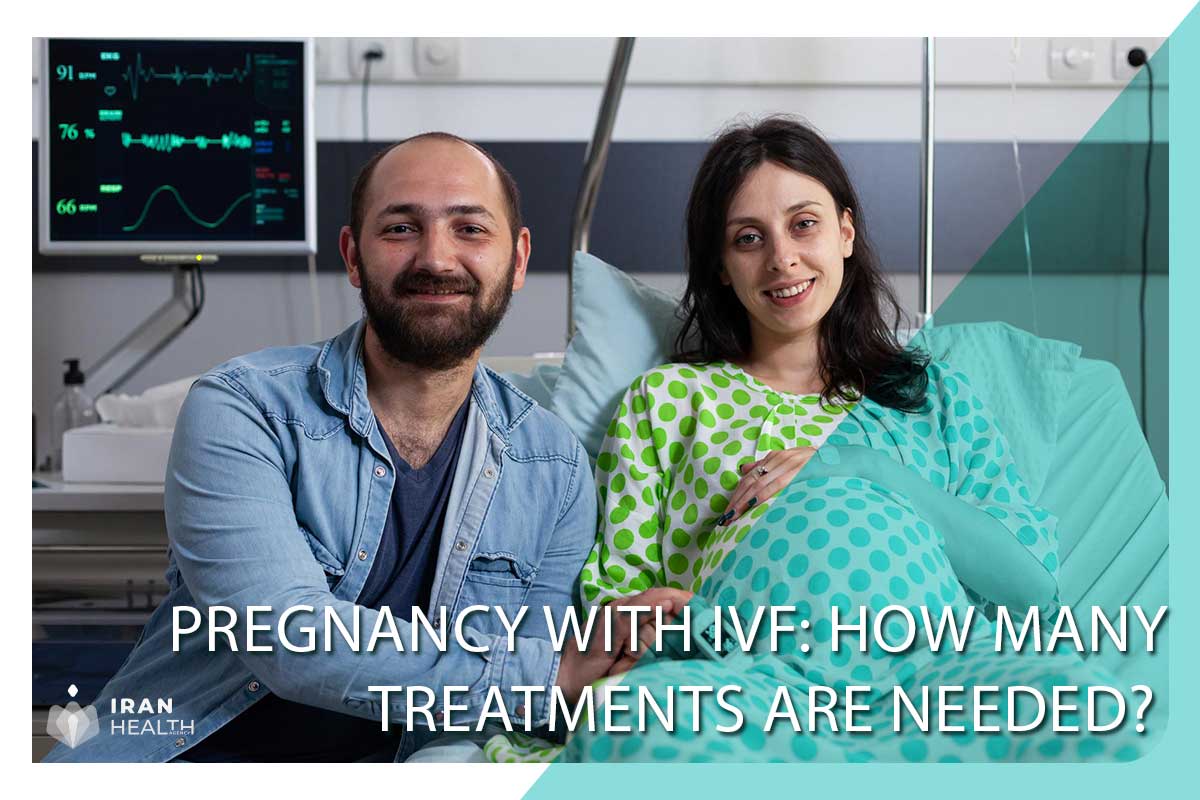IranHealthAgency as a leading medical company explains the variables that determine treatment numbers and how personalized plans are created for each patient.
Couples opting for IVF in Iran gain access to data-driven insights and expert consultations, ensuring that every treatment cycle is optimized for success. This transparent approach helps set realistic goals and fosters a supportive environment throughout your journey.
Hoping to Grow Your Family Through IVF? How Many Cycles Might It Take?
If you and your partner have made the big decision to build your family through in vitro fertilization (IVF), you’ve likely spent countless hours researching the intricate treatment process. You understand the protocols for ovarian stimulation, egg retrieval, fertilization, and embryo transfer. Yet despite best efforts, the chance of pregnancy happening from just one IVF cycle often proves disappointing.
Sadly, it’s common to endure failed cycle after cycle while watching your bank account balances and emotional fortitude plummet. The financial and psychological toll compounds increasingly month after month. You start questioning if it will ever work or if you should just give up this dream of parenthood completely.
While IVF success rates per single fresh cycle may only range between 15-45% depending on specific patient diagnoses and age, odds continue rising substantially with subsequent consecutive attempts. By the third complete IVF cycle, average cumulative pregnancy rates approach around 75% for women under 35. Additional tries beyond that further tip odds favorably, plateauing typically between the 6th and 8th cycle.
But who can endure so many consecutive IVF procedures without experiencing a complete breakdown? Before resigning yourself preemptively to endless (often ineffective) treatments or prematurely halting efforts, understand what variables impact the number of cycles ultimately needed for success.
IVF Pregnancy Rates by Cycle Number
If considering IVF, one of the first data points people examine is the clinic’s per-cycle success rates. In other words, this represents their chances of becoming pregnant after one IVF cycle. However, since rates per cycle generally sit around 15-45%, depending on age and diagnosis, most patients need more than one cycle to conceive. Understanding cumulative success rates over multiple IVF attempts paints a more complete picture.
In well-designed studies across large populations, average success breakouts per IVF attempt are:
Cycle 1: between 29-43%
Cycle 2: between 19-33%
Cycle 3: between 15-25%
So, by the third completed cycle, cumulative pregnancy rates approach 75% for women under 35. Average rates continue rising with further cycles, plateauing around cycles 6-8.
Therefore, while seeing that big BFP (big fat positive) pregnancy test come back positive on the very first IVF attempt brings tremendous joy, statically, it takes most people at least 2-3 complete cycles. Many parents wait a long time before holding their long-awaited baby.
After Embryo Transfer: The Two-Week Wait
Embryo transfer back into the uterus is followed by a two-week waiting period. This nerve-wracking period allows the embryos to implant hopefully, trigger rising HCG hormone levels, and result in a positive pregnancy test confirming success!
What to Expect Physically
Given that your body has recently undergone egg retrieval and the transfer procedure, it is wise to continue taking it easy. While serious complications are uncommon, give yourself permission to rest and recover. Pay attention to your body’s signals. Signals demanding your attention could include the following:
- Heavy bleeding (more than light spotting)
- Severe pelvic pain
- Fevers or chills indicating potential infection
More commonly, however, you may experience:
- Mild cramping and discomfort—This arises as the embryos embed into your uterine lining.
- Bloating or constipation—leftover stimulation medications can cause this. Stay hydrated and eat fiber-rich foods.
- Headaches, mood swings, breast tenderness—blame shifting hormone levels for such fun early pregnancy side effects if this is your month!
- Spotting—Minor spotting a week after transfer potentially signals implantation. However, spotting alone cannot confirm pregnancy status.
If you experience severe symptoms, contact your doctor immediately; otherwise, try your best to cope with normal body twinges.
Resting vs. Normal Activity
During the two-week wait, your clinic will likely refrain from strenuous activity, heavy lifting, and submerging in tubs or pools. Follow any specific restrictions given. However, research shows continuing everyday non-stressful routines versus strict bed rest does NOT change IVF success rates during this period.
Therefore, although a desk job is unlikely to negatively impact your chances of implantation, it might not be the right time to begin training for that marathon you’ve been considering. Ask what’s deemed safe based on your personal health history. Then, make self-care and stress reduction your top priority in whatever ways work best for you.
The Emotional Ups and Downs
Potentially, no part of the entire IVF process provokes such mental anguish and instability as this miserable two-week waiting phase. The days often pass with excruciating slowness. Analyzing every single twinge and bathroom wipe becomes obsessive. Skimming countless online forums about early signs and symptoms offers little reliable reassurance. One day, you just know your symptoms seem promising. Your breast tenderness disappears the next day, and you are convinced it failed.
Avoid obsessing over every small detail! There is a genuinely minimal way to distinguish between early pregnancy symptoms versus regular monthly cycle variation symptoms, definitely at this too-early point. Until the official test day arrives, you can practice patience and self-care. Confide worries in supportive friends and partners who lend non-judgmental ears if needed. Recognize your feelings are normal – this uncertainty you face would be unbearable for anyone desiring a baby this intensely! Still seek balance via healthy outlets like light exercise, enjoyable hobbies, laughter, and optimism when possible.
You’ve made it through retrieval and transfer, which are the major hurdles. Now, clinch down and tough out these final days! Before you know it, you’ll be peering anxiously at that upcoming pregnancy test, hoping two sweet lines confirm your family growth soon begins!



